TL;DR
secondary title
1. The flow of asset data between blockchains is an inevitable trend, and cross-chain bridges have also become an inevitable product.
2. The cross-chain bridge mainly adopts three technical solutions: locking + casting/destruction, fund pool, and atomic replacement.

3. Four trends in the development of cross-chain bridges: NFT cross-chain, cross-chain aggregation, cross-chain capital pool participation in DeFi ecology, and cross-chain focusing on specific ecology (such as Layer 2, non-EVM chain).
According to the statistics of Blockchain-Comparison, there are at least 126 Layer 1 blockchains. These blockchains are different from each other.
Bitcoin is an electronic cash transfer network, and there are few applications in the network. Although BTC is very valuable, it is often shelved, and the value of assets has not been utilized. Ethereum is an application network with a rich ecology, but the network is often congested, a large amount of funds are used to pay gas fees, and the user experience is not very good. BTC hopes to go to Ethereum to participate in DeFi. ETH hopes to trade on chains such as Near when the network is congested.
Beep News made statistics on 71 cross-chain bridges. In this research report, we will conduct the most comprehensive review and interpretation of the cross-chain ecology from the three dimensions of cross-chain ecology status, technical solutions, trends and opportunities.

image description
71 cross-chain bridges Source: Beep News
Current status of cross-chain ecology
As we can see now, asset cross-chain has become a very widespread phenomenon, even to the point of pervasiveness.
The first is that there are many cross-chain bridges. According to data from debridges.com in July this year, the number of cross-chain bridges on Ethereum, BNB Chain, and Polygon reached 100, 68, and 48, respectively. Coupled with the emergence of new public chains and new Layer 2, there should be more and more supporting facilities for cross-chain bridges.
The second is that there are many cross-chain assets. Taking BTC as an example, you should have seen many assets related to BTC, such as WBTC, anyBTC, VBTC, etc. In fact, these are cross-chain assets generated based on BTC. This is only part of the homogeneous tokens. With the development of NFT, the cross-chain of NFT is expected to bring more dazzling cross-chain assets.
The cross-chain permeability is best played under the composable characteristics of DeFi. We often see various cross-chain assets in DAPP, such as WBTC in the lending market and ceUSDC in DEX. The ecological map of Multichain illustrates this point well.

image description
Multichain ecology
Therefore, with the emergence of more and more cross-chain bridges, the types and amounts of cross-chain assets are increasing rapidly. At the same time, cross-chain interactions between ecologies are becoming more frequent and intricate.
Overall, at the current stage, the most prosperous cross-chain ecology is Ethereum, BNB Chain, Polygon, Avalanche, Fantom, etc. Among the cross-chain assets, USDC has the highest proportion, followed by USDT, MATIC, ETH/WETH, and DAI.
Among the 71 cross-chain bridges counted by Beep News, the cross-chain bridges with the highest TVL (locked volume) include: Polygon Bridge, Arbitrum Bridge, Optimism Bridge, Stargate, WBTC, etc.
Analysis of technical solutions and advantages and disadvantages
The first point that needs to be explained is that assets cannot really achieve cross-chain. Its as if physical gold cant really get into your asset book. In the book, we can only use the gold balance in text format to represent the gold position.
Similarly, because the bookkeeping rules between blockchains are different, BTC cannot be used directly in the Ethereum network. What we can do is to transform BTC into an asset that complies with the bookkeeping rules of the Ethereum network. To use instead of BTC.
So when we talk about cross-chain assets, we are actually talking about the process of minting and destroying certificates representing the value of assets on another chain, or the process of direct exchange between native assets and cross-chain assets.
At present, the technical solutions of cross-chain bridges can be mainly divided into three types: 1, lock-up + casting/destruction; 2, liquidity pool; 3, atomic replacement.
Lock-up + minting/destroying

WBTC is a typical lock + mint/destroy cross-chain bridge. If the user wants to cross-chain BTC to the Ethereum network, he needs to request WBTC from the acceptor. The acceptor first performs KYC/AML verification on the user, and then hands over the user’s BTC to the custodian for custody. The custodian and the acceptor perform WBTC casting, and the acceptor returns the WBTC to the user.
In this process, the locking, casting, and destruction of assets rely on smart contracts or centralized third parties. The weakest link in security is the bridge itself. Vulnerabilities in smart contracts, third parties controlling asset custody addresses, etc. may become single points of failure.
Therefore, when we evaluate the security of cross-chain bridges, we often consider the number and distribution of verifiers of the bridge, whether verifiers are required to pledge, whether there is a mechanism for confiscation of pledges, whether assets are managed by smart contracts or controlled by multi-signatures, or is held by a single third party.
In the case of decentralized distribution of verifiers, verifiers are required to pledge assets, there is a penalty mechanism for doing evil, and assets are managed by smart contracts, the security of cross-chain bridges is higher.
In addition to WBTC, some official Layer 2 bridges of Ethereum, such as Polygon Bridge, Arbitrum Bridge, Rainbow Bridge connecting Ethereum and Near ecology, and some third-party bridges that support multi-chains such as Wormhole also use lock + mint/destroy mechanisms .
Considering that the cross-chain is carried out in the order of lock + mint or burn + unlock, the cross-chain efficiency of the lock + mint/destroy type cross-chain bridge will be lower than the other two types of cross-chain methods.
Liquidity pool class
Liquidity pool cross-chain bridges add liquidity pools on the basis of lock-up + casting/destruction cross-chain bridges. Because native assets and cross-chain assets are placed in the liquidity pool in advance, the cross-chain speed will be faster than the former.
The logic of this type of cross-chain bridge should be as follows:
1. The cross-chain bridge sets up a liquidity pool on the source chain and the target chain respectively, and places the original assets and cross-chain assets in advance respectively.
2. The cross-chain bridge provides staking rewards to attract users to deposit assets into the liquidity pool. These users act as LPs.
4. A more extensive operation of the liquidity pool cross-chain bridge is: the third-party cross-chain bridge itself issues some cross-chain assets as a trading medium between the source chain assets and the target chain assets. For example USDC (Ethereum)>anyUSDC>USDC (Fantom).
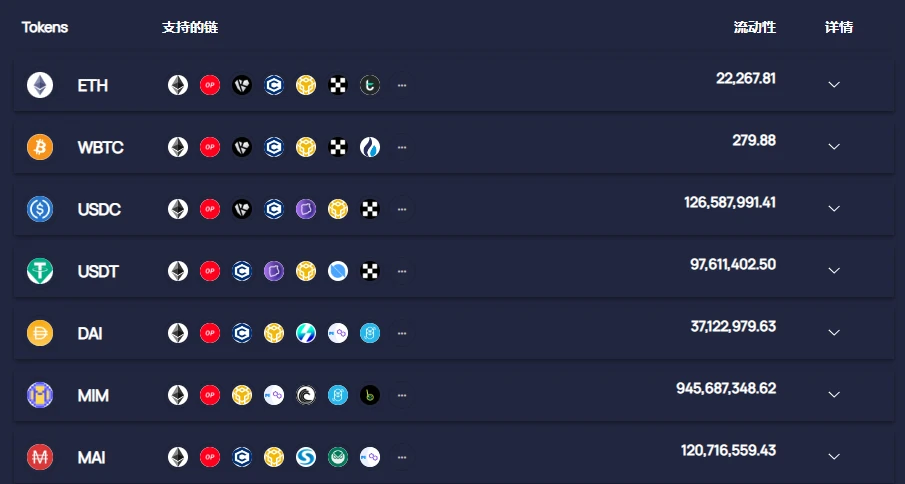
image description
Liquidity pool on Multichain
It can be seen that the security risk of this type of cross-chain bridge is mainly borne by LP. Once the pool is hacked, the liquidity provided by LP is likely to be taken away by hackers. An unbalanced pool will also cause the value of cross-chain assets to evaporate out of thin air, thus transmitting the crisis to cross-chain users.
At present, the cross-chain bridges that adopt the liquidity pool method mainly include ThorSwap, Hop Exchange, Synapse Bridge, Boba Gateway, etc.
LayerZero is a full-chain interoperability protocol, and its cross-chain solution has been further optimized on the basis of liquidity pools. On the one hand, it allows all chains to share liquidity through a unified liquidity pool.
For example, the DAPP of the A chain tells the Endpoint deployed on the A chain I want to send 1 ETH to the B chain. When the transaction is on the A chain, the Oracle will go to the A chain to check whether the transaction is actually on the chain, and the Relayer Will go to the A chain to obtain the proof of this transaction. Oracle and Relayer send the content they get to the Endpoint of chain B. If the content of the two matches, the message of chain A is sent to chain B, otherwise the transaction is ignored.
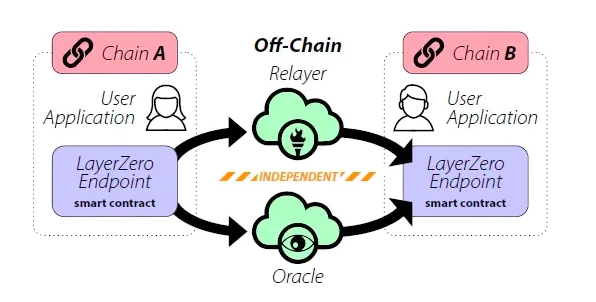
image description
Source: W3. Hitchhiker
With the deployment of Endpoint and the help of Oracle and Relayer, the state between chains and chains can be consistent and synchronized. So LayerZero can more directly cross-chain assets. Take Radiant, a full-chain lending project that adopts the LayerZero solution, as an example. You can deposit ETH on the Arbitrum network, and then lend USDC directly on Avalanche.
Compared with the cross-chain bridge under the locking + minting/destroying mechanism, the characteristics of the liquidity pool cross-chain bridge and blockchain decentralization are closer.
atomic replacement
Class 3 is the atomic replacement class. The atomic replacement type cross-chain bridge accesses assets through private keys. When one party does evil, the other party can retrieve assets through a time lock (which can only be opened after a specified time). There is no need for a centralized third party to provide trust guarantees, so The safest of the 3 types of bridges.
The limitations and advantages of this approach are obvious. The limitation is that the original chain and the target chain must be based on the same algorithm and must be compatible with HTLC (hash time-locked contract).
The advantage is that any assets on the original chain and the target chain that meet the conditions can be directly traded without intermediate assets as a medium, and the transaction cost is relatively low and the speed is faster. In addition, transactions can be initiated directly through user wallets without entrusting funds to a centralized third party, which is more decentralized and safer.
At present, cBridge mainly adopts the cross-chain method of atomic replacement. When there is a cross-chain requirement, cBridge will create a state channel and perform atomic replacement on this channel. Take the cross-chain from Arbitrum to Optimism as an example:
1. USDT is locked into Arbitrums security contract (default lock time is 12 hours)
2. A state channel is created, cBridge generates a key to access the contract, and shares the encrypted hash of this key with the relay node
3. Relay node creates a secure contract address in Optimism and deposits the same amount of USDT in it
4. The user uses the key to obtain the USDT on Optimism through cBridge. During this process, the relay node will also know the key and can use this key to unlock the USDT in the Arbitrum security contract
On this basis, cBridge provides guarantee for cross-chain information verification through SGN (a PoS chain). Nodes on SGN (that is, verifiers) participate in verification by staking CELR, and will be punished for doing evil or being disconnected. The whole mechanism is relatively safe. At present, there are a total of 21 verifiers participating in transaction verification on SGN, and the number of pledged CELR exceeds 2.4 billion.

image description
Source: sgn.celer.network
Cross-chain trends and opportunities
Asset cross-chain is essentially a trade-off between security, speed, and scalability (supporting more chains and assets). For example, if a cross-chain bridge supports as many chains and assets as possible, it will also introduce more risk points.
Since it is impossible to achieve perfection in all dimensions, major cross-chain bridges often choose an angle as a development strategy.
Layer2 official bridge focuses on security
Taking Polygon Bridge and Arbitrum Bridge as examples, they each only support cross-chain between Ethereum mainnet and Polygon, Ethereum mainnet and Arbitrum. This approach limits the cross-chain ecology to Ethereum and Layer 2 (especially Arbitrum Bridge, Rollup enables Arbitrum to inherit the security close to the Ethereum mainnet), ensuring higher cross-chain security.
In addition, this strategy also captures the development dividend of Layer 2 by positioning the cross-chain between the Ethereum mainnet and Layer 2. At present, Layer 2 is in a relatively critical development period, and more and more assets are cross-chained to Layer 2. In this way, the Layer2 official bridge captures a large amount of TVL. Polygon Bridge, Arbitrum Bridge, and Optimism Bridge currently rank among the top three in TVL among all cross-chain bridges.
Cross-chain aggregators focus on user experience
In these cross-chain bridge interfaces, after the user selects the cross-chain/swap asset, the original chain, and the target chain, the platform will display multiple routes to the user, and sort the routes according to the gas fee, cross-chain time, etc., so that the user can conveniently Choose the best cross-chain solution.
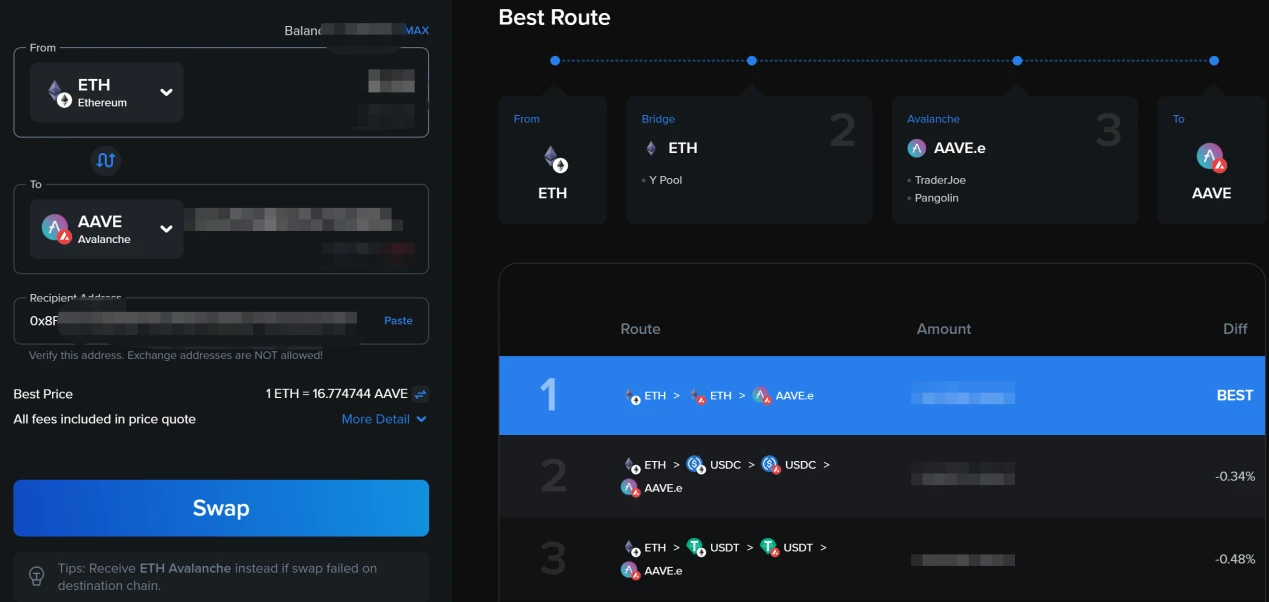
image description
LI.FI cross-chain interface
In addition, the aggregation cross-chain bridge is also optimized in some small details. For example, Bungee provides refueling function. In the case of insufficient cross-chain gas, users can transfer tokens from other chains as gas fees through the refueling function.
More and more cross-chain bridges provide staking options
Taking LI.FI as an example, X Swap on LI.FI is used for cross-chain swap of assets, and Y Pool provides a staking entrance for users, and users can obtain staking income by providing liquidity as LP.
This method of optimizing the depth of the fund pool by aggregating the liquidity in the hands of users is being adopted by more and more cross-chain bridges, including Multichain using the locking + minting/destroying model and cBridge using the atomic replacement model. Both of them also use staking Function.
NFT bridge becomes a new potential cross-chain track
If the current cross-chain solutions for homogenized tokens are relatively similar, then NFT cross-chains still have great potential for exploration.
For example, both Multichain and Chainswap support NFT cross-chain, but Multichain only supports a limited set of 3 NFTs for cross-chain cross-chain, while Chainswap supports the import of NFT contract addresses and TokenIDs, with a wider range of support.
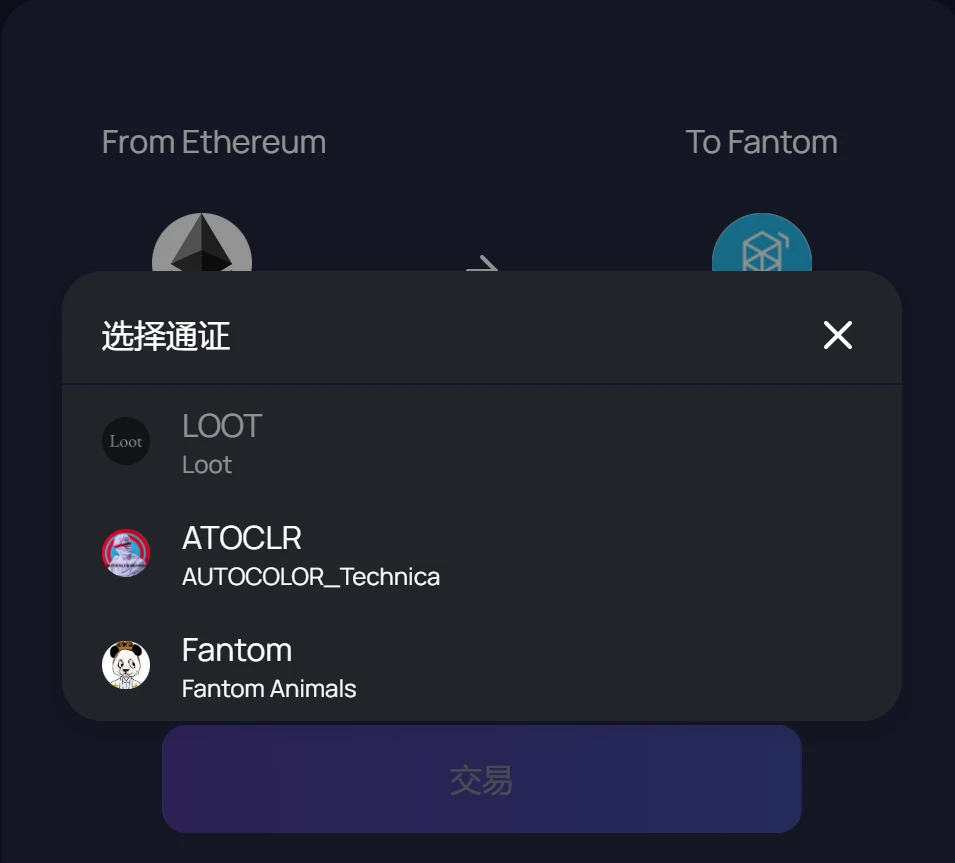
Multichain only supports 3 NFT collections cross-chain
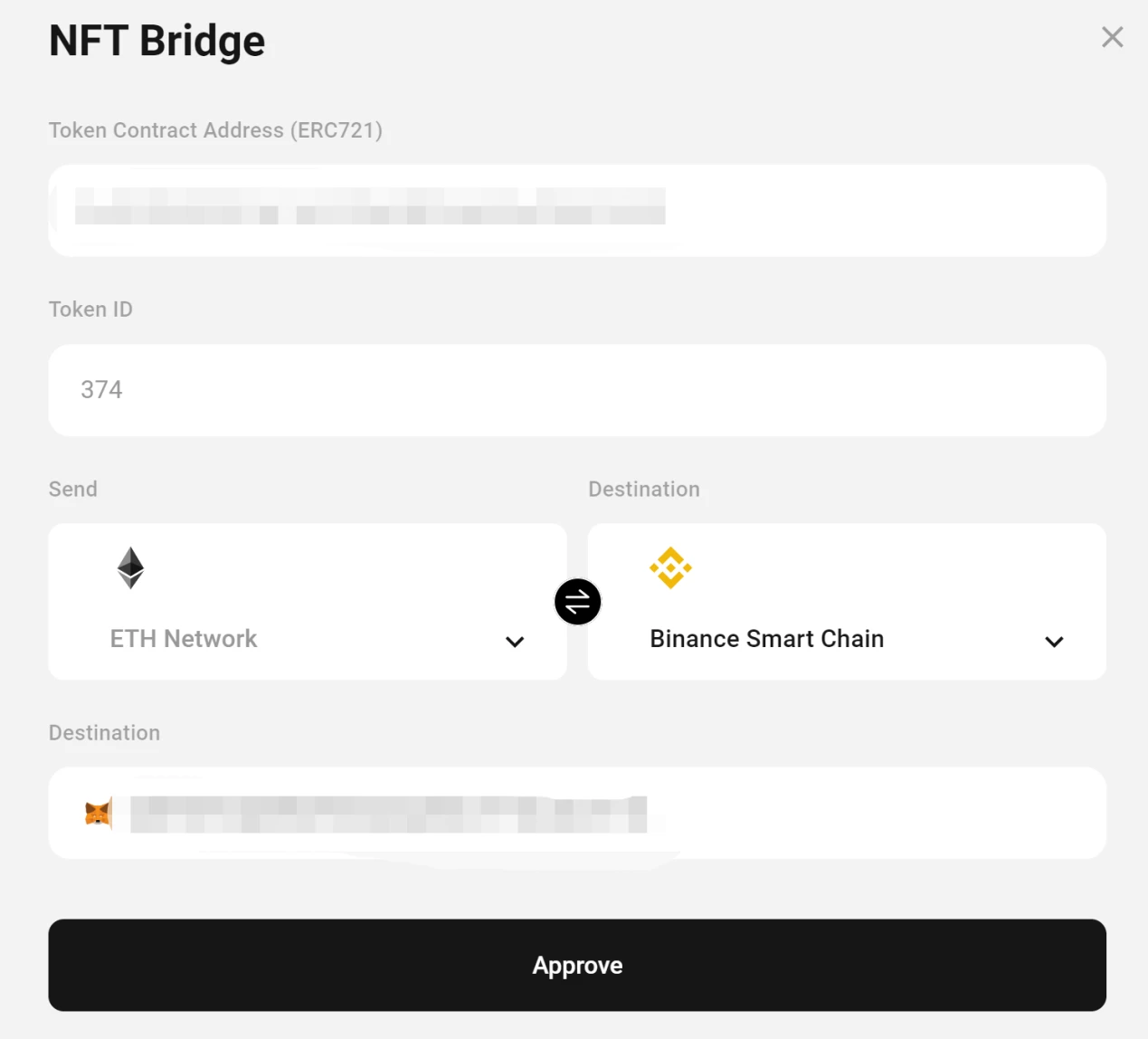
image description
Chainswap NFT cross-chain interface
Referring to the cross-chain thinking of homogeneous tokens, NFT cross-chains may also have aggregation platforms.
In addition, the NFT cross-chain may still be in the locking + casting/destruction mode. If the cross-chain is carried out through the liquidity pool, the NFT liquidity pool should face a more serious lack of liquidity depth than the homogeneous token cross-chain How to solve this problem may become the focus of competition for NFT cross-chain bridges.
At present, Multichain, cBridge, Chainswap, Horizon by Harmony, deBridge, EVODeFi, and Parakeet.dao have all provided NFT cross-chain functions.
The cross-chain bridge fund pool participates in the DeFi ecosystem
It is also becoming a trend for cross-chain bridge fund pools to participate in DeFi. For example, Chainswap will support cross-chain DEX and cross-chain lending. Aave proposed a cross-chain + lending solution in version V3.
The cross-chain bridge fund pool is a natural fit for DeFi. This approach can better improve the utilization rate of funds. At the same time, it can also increase the depth of the fund pool by encouraging LPs to provide liquidity, and improve the experience of the cross-chain bridge itself.
Of course, the other side of LPs higher staking APR is that they have to bear cross-chain risks at the same time. How to ensure the safety of the fund pool should become the theme of the cross-chain bridge track in the long run.
other innovations
It is foreseeable that innovations in various dimensions of cross-chain bridges will continue to emerge.
epilogue
epilogue
Vitalik once wrote that the future of blockchain is multi-chain rather than cross-chain, and there are fundamental limitations in the security of cross-chain bridges.
At present, the foreseeable opportunities for cross-chain bridges lie in the realization of full-chain communication and full-chain interoperability, the combination of cross-chain capital pools and DeFi, NFT cross-chain, and cross-chains that focus on specific ecology, such as L2 cross-chain Cross-chain with non-EVM chains. The paradigm of the cross-chain bridge track has not yet been determined, and it is still a track full of potential and variables.
Reference article:
Reference article:
Cross-chain Demystification: Are Your Assets Really Transferred During the Cross-chain Process? 》by Block Rhythm
Cross-chain Talk: In-depth analysis of 16 cross-chain solution trade-offs by DoDo
Dismantling LayerZeros Multi-chain Ambition by W3.Hitchhicker










